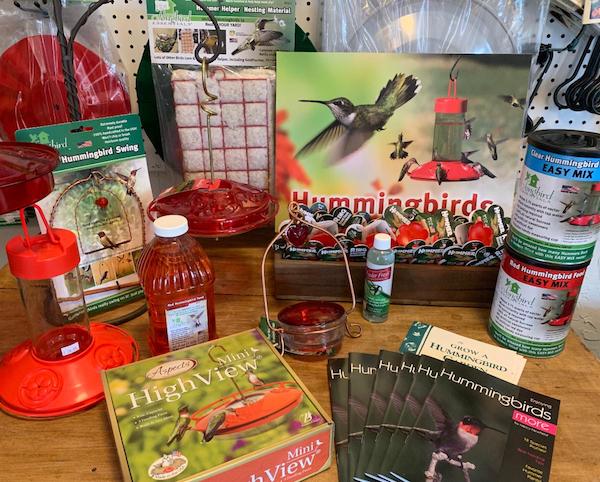
Hummingbird Heros
Pay your taxes and put out your hummingbird feeders! Hummingbirds always return to our area by May 1, but if we have a warming trend in mid-April they may be back as early as April 15th. Often they are here before nectar producing flowers bloom, so feeding them early lets them know they are welcome for the rest of the season.
Mount your feeder in your preferred viewing area. They are small and quick, so bring them in close for maximum enjoyment. If you plant flowers nearby, that will also help to attract them.
Adult males are often aggressive at the feeder, defending it for their sole use. Try a second feeder out of line of sight from the first so that the male can’t dominant both feeders, and less dominate birds like females and young will get their chance.
Hummingbirds are attracted to the color red. If your feeder is clear or some other color, try attaching a red ribbon to make it more appealing.
The proper formula for hummingbird nectar is 4 parts water to 1 part sugar. Mix your own or use pre-mixed formulas. Sugar, water, and warmth are certain to lead to spoilage when hanging outside. If you want to be successful, it is critical that you clean your feeders and refill with fresh nectar regularly. At least once a week in cool weather, every other day, or even daily in extreme summer heat.
Continue filling your feeders through at least mid-September. Birds that spent the summer in your backyard may be gone by then but birds migrating from farther north may still stop for a quick energy boost. You will not interfere with their migration schedule by leaving feeders out too late. Just be sure you take them down in time to avoid frost damage.
Hummingbird nests generally include spider webs and lichens in their construction, but they will use other fibers–like small snippets of yarn or twine if you provide them. Watch where they go when transporting these offerings and you may be able to discover a hummingbird nest site.
Terra Depot has everything you need – lovely hummingbird feeders, dry and liquid nectar mixes, and nesting material. Be ready to welcome spring and these little beauties to your garden.